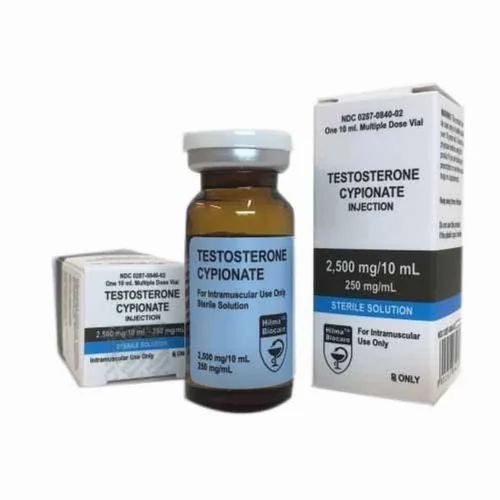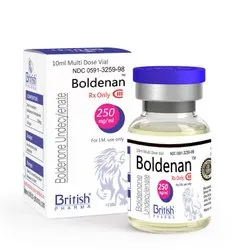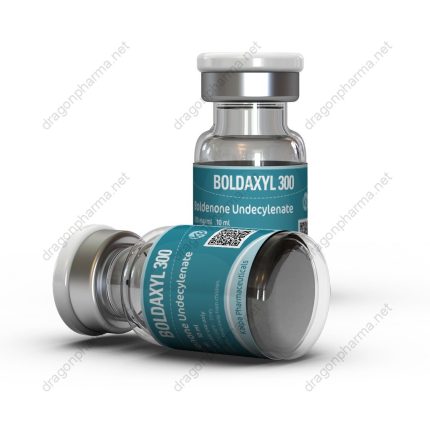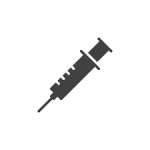Testosterone Cypionate
$50.00
Endogenous testosterone is responsible for sexual maturation at all stages of development throughout life. Synthetically, it is prepared from cholesterol. The function of androgens in male development begins in the fetus, is crucial during puberty, and continues to play an important role in the adult male. Women also secrete small amounts of testosterone from the ovaries. The secretion of androgens from the adrenal cortex is insufficient to maintain male sexuality.
Increased androgen plasma concentrations suppress gonadotropin-releasing hormone (reducing endogenous testosterone), luteinizing hormone, and follicle-stimulating hormone by a negative-feedback mechanism. Testosterone also affects the formation of erythropoietin, the balance of calcium, and blood glucose. Androgens have a high lipid solubility, enabling them to rapidly enter cells of target tissues. Within the cells, testosterone undergoes enzymatic conversion to 5-alpha-dihydrotestosterone and forms a loosely bound complex with cystolic receptors. Androgen action arises from the initiation of transcription and cellular changes in the nucleus brought about by this steroid-receptor complex.
Normally, endogenous androgens stimulate RNA polymerase, resulting in an increased protein production.These proteins are responsible for normal male sexual development, including the growth and maturation of the prostate, seminal vesicle, penis, and scrotum. During puberty, androgens cause a sudden increase in growth and development of muscle, with redistribution of body fat. Changes also take place in the larynx and vocal cords, deepening the voice. Puberty is completed with beard development and growth of body hair. Fusion of the epiphyses and termination of growth is also governed by the androgens, as is the maintenance of spermatogenesis. When endogenous androgens are unavailable, use of exogenous androgens are necessary for normal male growth and development.
Testosterone was the first ever synthesized anabolic steroid, and testosterone cypionate is a slow-acting, long-ester, oil-based injectable testosterone compound that is commonly prescribed for the treatment of hypogonadism – low testosterone levels and various related symptoms in males.
Testosterone cypionate first appeared on the U.S. prescription drug market during the early 1950’s, as Depo-Testosterone by Upjohn, now Pharmacia & Upjohn. Due to testosterone cypionate’s vast similarity to the earlier released and slightly longer testosterone enanthate, it has received only limited global availability and is often identified as an American medication.
Testosterone is the primary androgen found in the body. Endogenous testosterone is synthesized by cells in the testis, ovary, and adrenal cortex. Therapeutically, testosterone is used in the management of hypogonadism, either congenital or acquired. Testosterone is also the most effective exogenous androgen for the palliative treatment of carcinoma of the breast in postmenopausal women. Testosterone was in use in 1938 and approved by the FDA in 1939. Anabolic steroids, derivatives of testosterone, have been used illicitly and are now controlled substances. Testosterone, like many anabolic steroids, was classified as a controlled substance in 1991. Testosterone is administered parenterally in regular and delayed-release (depot) dosage forms. In September 1995, the FDA initially approved testosterone transdermal patches (Androderm); many transdermal forms and brands are now available including implants, gels, and topical solutions. A testosterone buccal system, Striant, was FDA approved in July 2003; the system is a mucoadhesive product that adheres to the buccal mucosa and provides a controlled and sustained release of testosterone. In May 2014, the FDA approved an intranasal gel formulation (Natesto). A transdermal patch (Intrinsa) for hormone replacement in women is under investigation; the daily dosages used in women are much lower than for products used in males. The FDA ruled in late 2004 that it would delay the approval of Intrinsa women’s testosterone patch and has required more data regarding safety, especially in relation to cardiovascular and breast health.
The Cypionate Ester: An ester is any of a class of organic compounds that react with water to produce alcohols and organic or inorganic acids. Most esters are derived from carboxylic acids, and injectable testosterone is typically administered along with one or multiple esters. The addition of a carbon chain (ester) attached to the testosterone molecule controls how soluble it will be once inside the bloodstream. The smaller the carbon chain, the shorter the ester, and the more soluble the medication. A small/short will have a shorter half life – a repeating cycle of a medication’s time within the body. The inverse is true of long carbon chains, like cypionate, which both act slowly upon the body and evacuates the body at a similar rate.


MAECENAS IACULIS
Vestibulum curae torquent diam diam commodo parturient penatibus nunc dui adipiscing convallis bulum parturient suspendisse parturient a.Parturient in parturient scelerisque nibh lectus quam a natoque adipiscing a vestibulum hendrerit et pharetra fames nunc natoque dui.
ADIPISCING CONVALLIS BULUM
- Vestibulum penatibus nunc dui adipiscing convallis bulum parturient suspendisse.
- Abitur parturient praesent lectus quam a natoque adipiscing a vestibulum hendre.
- Diam parturient dictumst parturient scelerisque nibh lectus.
Scelerisque adipiscing bibendum sem vestibulum et in a a a purus lectus faucibus lobortis tincidunt purus lectus nisl class eros.Condimentum a et ullamcorper dictumst mus et tristique elementum nam inceptos hac parturient scelerisque vestibulum amet elit ut volutpat.
























Reviews
There are no reviews yet.